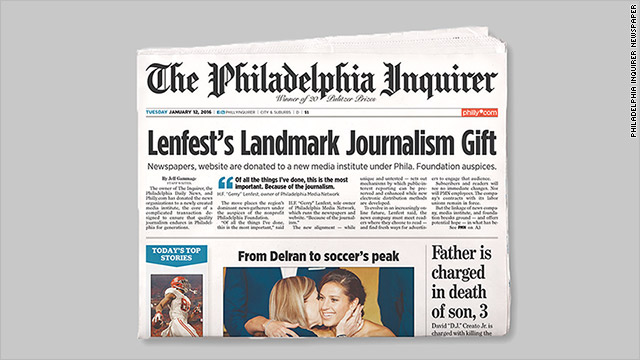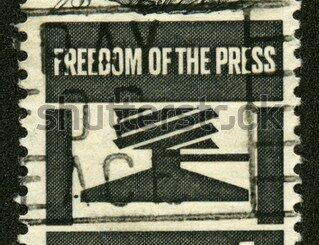When Newspapers Were in Demand on the Streets of Philadelphia
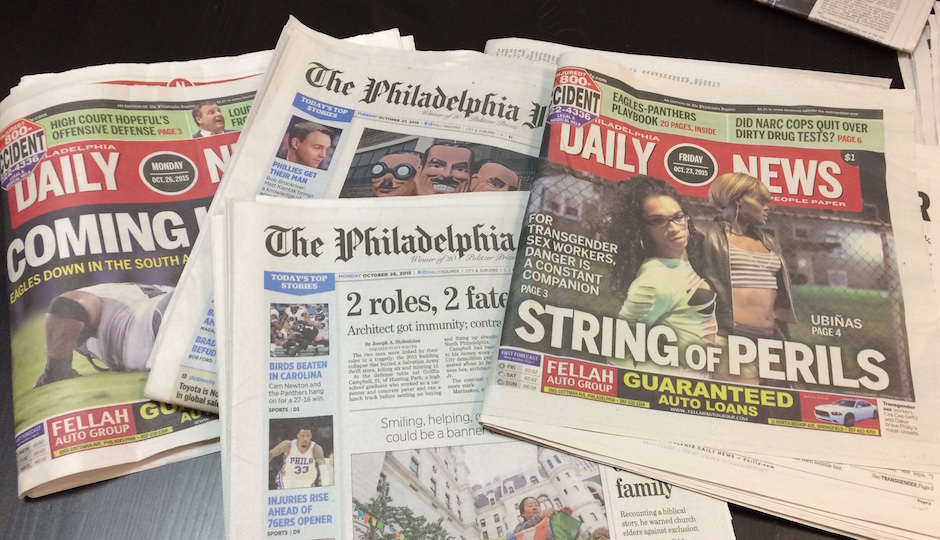
I was part of a crew who got up before dawn to hawk a tabloid newspaper on Philadelphia street corners.
Prologue: Future Bleak for Newspapers
Newspapers around the country are fighting to survive in the digital world. According to the Bureau of Labor Statistics, circulation for all newspapers in the US decreased by approximately 50 million copies in the last 15 years.
Ad revenue is on an irrevocably downward trend. This should be obvious to anyone who owns a smartphone. More and more people get their news and information from Facebook and Google, ad behemoths free from the burden of assembling newsrooms and paying journalists.
Read: Hedge Fund Vultures Eating Local News Whole
Still Breathing in Philadelphia
Here in Philly, we live in a two-newspaper town…well, kind of.
Philadelphia supports two mass-circulation daily newspapers, which is an achievement considering that over 1800 newspapers have vanished from the American landscape since 2004. The Philadelphia Inquirer and Daily News are owned by the Lenfest Institute, a non-profit, tax-exempt organization chaired by local philanthropist H. F. “Gerry” Lenfest. (There are for-profit entities in the organizational chart but they are unimportant in this context.)
The non-profit, tax-exempt status is important in this era of hedge fund consolidation of journalistic products. This means both papers can receive philanthropic donations, similar to the $20 million Lenfest seeded to an endowment to “ensure the future of independent journalism.” This could be the business model that makes certain that the Inquirer and Daily News remain local and self-sustaining.
Broadsheet and Tabloid
The Philadelphia Inquirer is the familiar broadsheet–the “paper of record”–that was started way back in 1829 and thrived during the Civil War. The paper has won 21 Pulitzer Prizes as of last year.
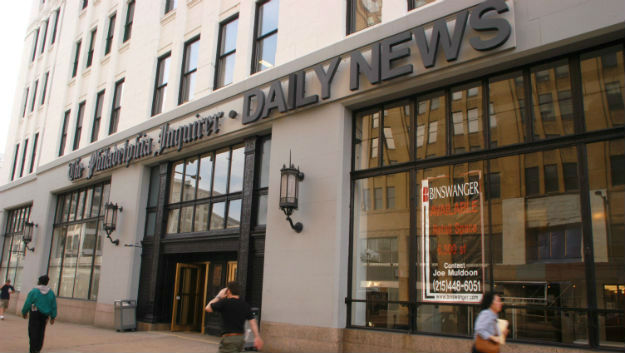
The Daily News
The Philadelphia Daily News is our tabloid newspaper. It is more compact and fits better in your hands. A lot has been made about the tabloid’s emphasis on crime and celebrity gossip. Tabloids depend on their cover to sell the newspaper. Controversy and sales are intertwined, as I found out when I hawked the Daily News on the streets of Philadelphia.
The paper was founded in 1925 and yes, its sensationalist covers boosted circulation to over 200,000 by 1930. The Daily News then saw a steady decline in sales and ad revenue. The two newspapers were sheltered under the same roof in 1957 when the Daily News was sold to Inquirer owner Walter Annenberg.
Many ownership changes ensued, along with a steady decline in circulation. The Daily News merged with the Inquirer in the last decade, meaning they stayed separate papers but shared newsrooms, ad sales, and content.
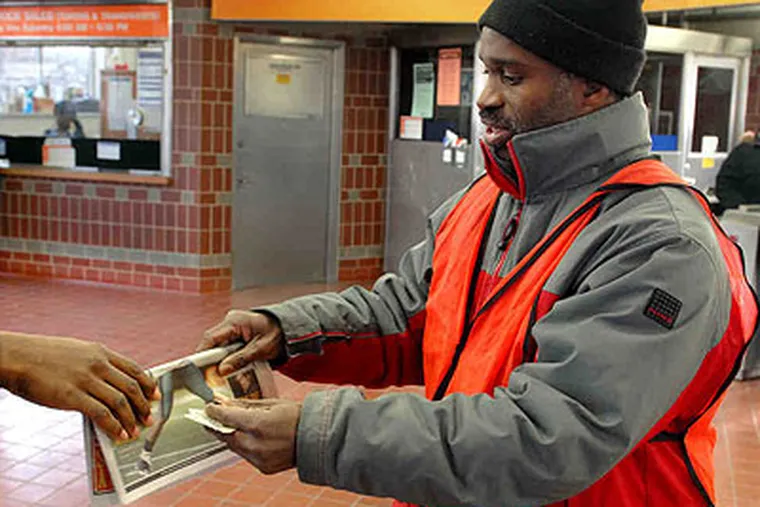
Street Corner Hawking
Word has it that in 1987, a fellow by the name of Bill Thorpe started a program whereby folks impoverished or down on their luck could make a little money by selling the Daily News on designated street corners in Philadelphia. Kevin Holmes, senior director of circulation operations, emailed me:
The program was successful to a point where the company [at that time, Knight Ridder] wanted to expand it throughout the entire city…and opening it up to whomever was willing to hawk the papers. Thousands of newspapers were sold daily throughout the 1990s until the industry decline started in the 2000’s.
Kevin Holmes
Count Me In
This is where I come in. By the mid-’90s, I was freshly divorced (it was my own damn fault), back in Philly with no job, untethered from old friends and family, revisiting self-destructive behavior…probably the lowest point of my life. I was perhaps exactly the kind of guy Bill Thorpe had in mind when he created the “bootjack program.” (The word “bootjack” identifies a man or woman who sells newspapers on street corners.) I made an inquiry and was soon issued the distinctive reflector vest that told the world I was a working man.
Here is what I remember about a day in the life of a bootjack. The year was 1995. It was a time when it seemed everybody wanted to buy a newspaper.
Yo! Daily News, Buddy?
It’s 6:10 am and I’m standing on a street corner in the freezing cold. The light of day won’t come for another half-hour, and so I wear my reflector vest like a suit of armor.
My right hand, my gloved hand, holds three copies of the Daily News, the preferred display, and a heavy lift considering the paper is around 100 pages. My left hand, not gloved, is buried deep in my pocket, ready to be called into service. When a car signals and a dollar is presented, the left hand changes as fast as possible. Fast transactions mean repeat customers. But even the slightest exposure numbs the hand, and it begs for that deep pocket. But is it possible to make change with a gloved hand? I can’t imagine how.
I rolled my Daily News copies to the street corner in two tall carts on wheels, each holding 100 copies. I always leave room for copies of the Philadelphia Inquirer, the more formal broadsheet. Rule of thumb: if a guy in a suit drives up, he’ll be asking for the Inquirer. The rest will be happy with the displayed product.
I Found My Thrill at Broad & Callowhill
A bootjack’s day starts with a flourish of activity in the back (15th Street) of the Inquirer/Daily News building at around 5:30 am. That’s when I arrive. The bootjacks, about 50 in all, hang around the loading dock, waiting for the truck to arrive from the printing plant in the suburbs. Even at this hour, the banter is playful.
The personality guys, about a third of the group, talk excitedly about sports, their women and kids, how much “clean time” (sobriety) they have, and especially how much money they’re going to make this morning. The other two-thirds say absolutely nothing. I’m in the latter group.
The truck chugs in at around 5:45 and an eager few–those hoping to be noticed and rewarded with a “good corner”–stack the bundles of newspapers high and long. It is now time to dispatch people to their corners. The head guy, who I’ll call Joe, stations himself behind the stack and first calls out the “regulars.” These are the men (and two women, by the way) who have been around for a long time and “hold down” the best corners. Regulars make the most money, as they should.
Detached Amusement
With the regulars sent on their way, it is now time for Joe to match vacant corners with a contingent of anxious newcomers, which includes me. I’m really at the mercy of this guy. I look at Joe and he returns my stare with a detached amusement. He’s probably wondering why a guy with a college education wants to be a bootjack. Joe starts assigning corners and I’m starting to get nervous.
But bingo, he gives me Delaware and Spring Garden, a very fine corner indeed. A cash register flashes in my mind. I take my bundles and depart happily.
Daybreak
It is now around 9 am and I can see the sun peeking over the Camden horizon. I’m on my second cart of newspapers and am feeling good about myself. I shake off the cold for my final hour on this street corner. I feel tempted to call it quits as the rush hour winds down, except that returning before 10 is frowned upon. And of course, it’s more dollars in my pocket.
I begin thinking about why the demand for this newspaper is so relentless. Some commuters will buy a paper, some won’t. Opportunity is a major factor. The longer and more stubborn the red stoplight, the better the corner. But regular customers who like you and count on you will stop, no matter what. I even get tips from generous souls who hand over a dollar and want no change in return.
Banner Headlines
After “cashing in,” a laborious process in which I hand over pounds of silver so Joe can count it in a machine, I stop by my breakfast place to eat and read my free copy of the Daily News. The tabloid’s cover trumpets another Eagles quarterback controversy, and I realize why my take was higher than usual. Those banner headlines can make or break your morning. I remember learning about all of that in journalism school, about tabloids, about headlines, about covers, about what sells newspapers.
But those lessons seem so far away, as my cold hands dig into my scrambled eggs and toast.
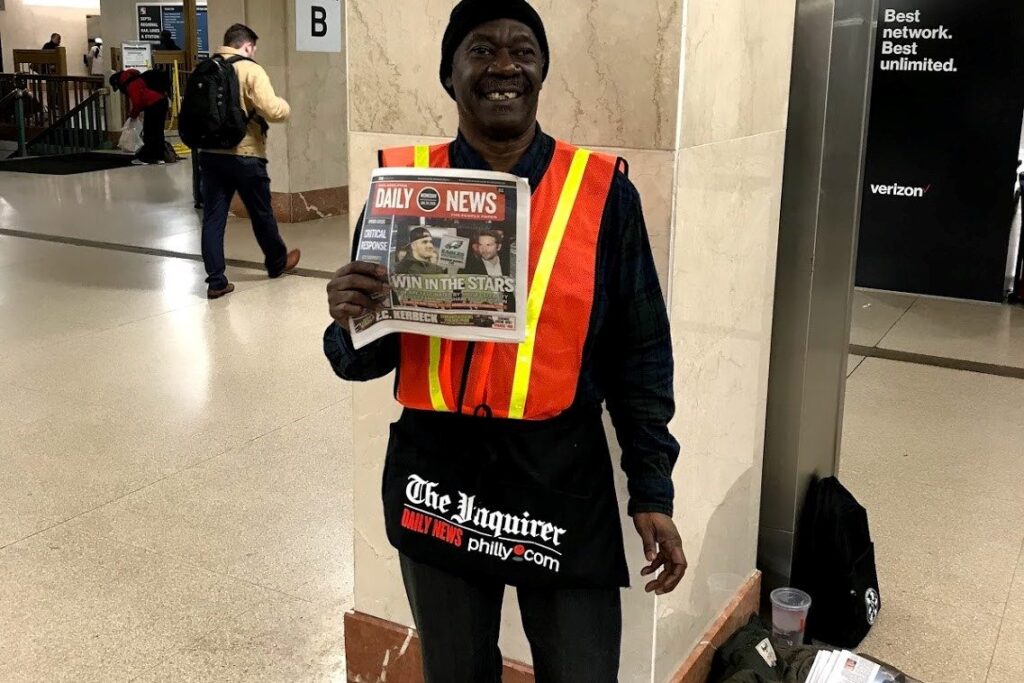
Requiem
I spent three months being a bootjack. No, it’s not that I predicted the demise of newspapers. I managed to get a real job. But the decline in newspaper circulation had even affected its lowest rung. Circulation director Kevin Holmes explains:
We closed [the bootjack program] in 2011. We continued shortly after with independent contractors having a crew of hawkers. There is currently one contractor left with a handful of corners.
The circulation decline is what drove most [newspapers] to end their bootjack programs.For example, corners that previously sold hundred of copies daily dwindled down to 30-40 [copies]. It made it harder to fill corners with folks willing to work those hours for minimal profit.
Kevin Holmes
I am left with fond memories of being part of a time when demand for newspapers hit a crescendo in my hometown. I also feel hopeful that our local daily papers are in good hands for the long haul.
Yo! Daily News, buddy?
